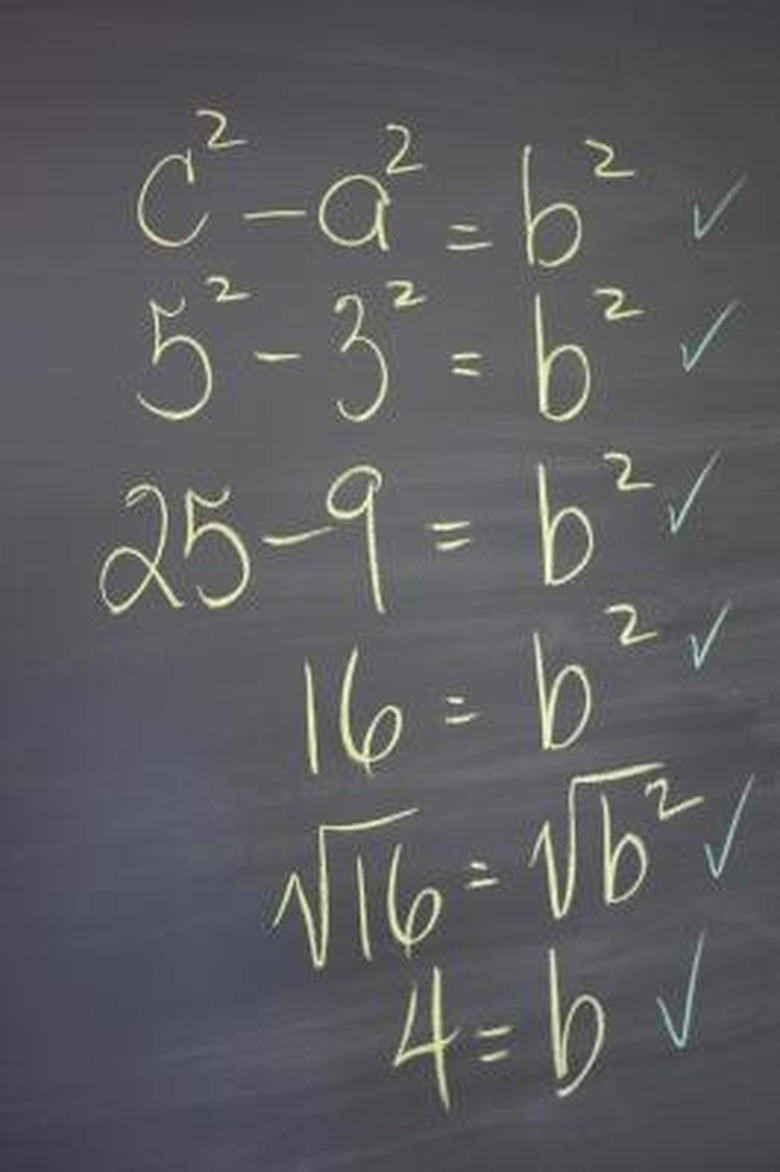How To Solve Linear Equations With 2 Variables
Systems of linear equations require you to solve for the values of both the x- and y-variable. The solution of a system of two variables is an ordered pair that is true for both equations. Systems of linear equations may have one solution, which occurs where the two lines intersect. Mathematicians refer to this type of system as an independent system. Systems of equations may alternately share all solutions, which occurs when the equations result in two identical lines. This is called a dependent system of equations. Systems of equations with no solutions occur when the two lines never intersect. You can solve systems of linear equations with two variables through substitution or elimination.
Solving with Substitution
Step 1
Solve one equation for either the x- or y-variable. For example, if your equations are 2x + y = 8 and 3x + 2y = 12, solve the first equation for y, resulting in y = -2x + 8. If you already have an equation given in the terms of the x- or y-variable, use that equation.
Step 2
Substitute the expression you solved for or identified for that variable in the second equation. For example, substitute y = -2x + 8 for y in the second equation, resulting in 3x + 2(-2x + 8) = 12. This simplifies to 3x – 4x +16 = 12, which simplifies to -x = -4 or x = 4.
Step 3
Plug the solved variable into either equation to solve for the other variable. For example, y = -2(4) + 8, so y = 0. The solution is therefore (4,0).
Step 4
Check your work by plugging the solution into both of the original equations.
Solving with Elimination
Step 1
Line up the two equations, one on top of the other, so the variables are aligned with each other.
Step 2
Add the equations together to eliminate one of the variables. For example, if your equations are 3x + y = 15 and -3x + 4y = 10, adding the equations eliminates the x-variables and results in 5y = 25. You might have to multiply one or both equations by a constant so that the equations match up.
Step 3
Simplify the resulting equation to solve for the variable. For example, 5y = 25 simplifies to y = 5. Then plug that value back into one of the original equations to solve for the other variable. For example, 3x + 5 = 15 simplifies to 3x = 10, so x = 10/3. The solution is therefore (10/3,5).
Step 4
Check your work by plugging the solution into both of the original equations.
TL;DR (Too Long; Didn't Read)
You can also graph the two equations. Any point at which they intersect is a solution to the system of equations. If you end up with an impossible statement while solving the system of equations, such as 10 = 5, either the system has no solutions or you have made an error. Check by graphing the equations to see whether they intersect.
References
- "Pre-Calculus Workbook for Dummies"; Michelle Rose Gilman, et. al; 2009
- West Texas A&M University: Solving Systems of Linear Equations in Two Variables
Cite This Article
MLA
Richards, Rebekah. "How To Solve Linear Equations With 2 Variables" sciencing.com, https://www.sciencing.com/solve-linear-equations-2-variables-8132798/. 24 April 2017.
APA
Richards, Rebekah. (2017, April 24). How To Solve Linear Equations With 2 Variables. sciencing.com. Retrieved from https://www.sciencing.com/solve-linear-equations-2-variables-8132798/
Chicago
Richards, Rebekah. How To Solve Linear Equations With 2 Variables last modified March 24, 2022. https://www.sciencing.com/solve-linear-equations-2-variables-8132798/
